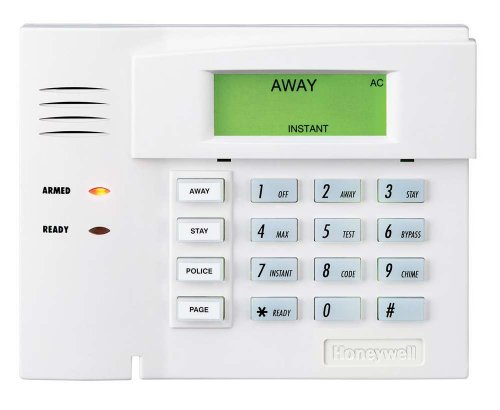Are you tired of slow internet when you need it most? Your router handles all the traffic coming into your home or office, but not all data is equally important.
Imagine streaming your favorite show without annoying buffering or having your video calls run smoothly without interruptions. Knowing how to prioritize traffic on your router can make this possible. You’ll discover simple steps to put your important internet activities first, giving you faster speeds and better performance exactly when you need it.
Keep reading to unlock the secret to a smarter, faster network.
Traffic Prioritization Basics
Traffic prioritization helps manage data on a network. It decides which data goes first.
This process improves how devices use the internet. It makes important tasks faster.
What Is Traffic Prioritization
Traffic prioritization means giving some data priority over others. It controls the order data moves through a router.
Routers check data type and importance. They send urgent data faster than less important data.
Benefits For Network Performance
Prioritizing traffic helps networks run smoothly. It reduces delays for important activities.
This leads to better video calls, faster downloads, and less lag in games. It makes the internet feel quicker.
- Improves streaming quality
- Reduces lag in online games
- Makes video calls clearer
- Speeds up urgent downloads

Credit: www.expressvpn.com
Router Settings For Prioritization
Prioritizing traffic on your router helps important data move faster. This can improve video calls, gaming, and downloads.
You can set priorities by changing router settings. Many routers have Quality of Service (QoS) features to do this.
Accessing Router Admin Panel
To change settings, you must open the router’s admin panel. This is done through a web browser on a device connected to the router.
Enter the router’s IP address in the browser’s address bar. Common IPs are 192.168.0.1 or 192.168.1.1.
- Connect your device to the router’s network
- Open a web browser like Chrome or Firefox
- Type the router IP address in the address bar
- Log in with the router username and password
Locating Qos Features
After login, look for Quality of Service or QoS in the menu. It might be under Advanced Settings or Traffic Management.
QoS lets you set which devices or apps get priority on your network. You can assign higher priority to video calls or games.
- Go to Advanced Settings or similar section
- Find QoS, Traffic Control, or Bandwidth Control
- Enable QoS if it is turned off
- Add rules to prioritize certain devices or services
Types Of Traffic To Prioritize
Not all internet traffic is the same. Some types need faster speeds and less delay.
Prioritizing traffic on your router helps important tasks work better. It keeps your connection smooth.
Gaming And Streaming
Online games need quick data delivery to avoid lag. Streaming videos need steady speed to prevent buffering.
Prioritize gaming and streaming traffic for better play and watching experience. This reduces interruptions.
- Online multiplayer games
- Live video streams
- Video on demand (VOD)
Voip And Video Calls
VoIP calls and video chats need stable connections. Delays or drops make conversations hard to follow.
Give priority to these calls to keep voices clear and video smooth. This improves communication quality.
- Voice over IP (VoIP) calls
- Video conferencing
- Online meetings and webinars
File Downloads And Uploads
Large file transfers use a lot of bandwidth but do not need low delay. They can run in the background.
Lower priority for file downloads and uploads lets other traffic run smoothly. This avoids slowing important tasks.
- Downloading movies or software
- Uploading photos or backups
- Sharing files online

Credit: www.reddit.com
Setting Up Qos Rules
Quality of Service (QoS) helps control internet traffic on your router. It lets you give priority to important data. This keeps critical apps running smoothly.
Setting up QoS rules is simple. You decide which traffic to prioritize and how much bandwidth it gets. This improves your network experience.
Creating Traffic Rules
Start by creating rules for different traffic types on your router. Rules tell the router what data needs priority. You can set rules for websites, games, or streaming.
Use your router’s interface to add these rules. Specify the ports, IP addresses, or protocols for the traffic you want to manage.
- Identify the traffic type (e.g., video, gaming, VoIP)
- Set rules based on port numbers or IP addresses
- Apply rules to specific protocols like TCP or UDP
Assigning Priority Levels
After creating rules, assign priority levels to each. Priority levels tell the router which traffic is most important. High priority traffic gets bandwidth first.
Most routers let you choose levels like high, medium, or low. Assign high priority to work calls or video streaming. Assign low priority to background downloads.
- High priority for real-time apps like VoIP or video calls
- Medium priority for gaming or streaming services
- Low priority for file downloads or updates
Using Device Or Application-based Prioritization
Prioritize traffic by device or application. This helps when certain devices or apps need faster internet. You can set priority for phones, computers, or smart TVs.
Some routers allow you to pick apps like Netflix or Zoom for priority. This helps keep important apps running well even with many devices connected.
- Select devices by their IP or MAC address
- Choose applications from a preset list or add custom apps
- Combine device and app rules for precise control
Advanced Prioritization Techniques
Prioritizing traffic on a router helps manage internet speed and quality. Using advanced techniques improves network performance.
These methods help control how data moves, ensuring important traffic gets priority over less critical data.
Bandwidth Allocation
Bandwidth allocation assigns a set amount of data speed to different devices or applications. This prevents one user from using all the bandwidth.
You can limit or guarantee speeds to ensure smooth performance for key tasks like video calls or streaming.
- Set minimum bandwidth for important devices
- Limit bandwidth for less critical apps
- Adjust limits based on time or usage
Traffic Shaping And Scheduling
Traffic shaping controls the flow of data to avoid congestion. It delays lower priority traffic to keep the network stable.
Scheduling sets specific times for certain types of traffic. This helps balance network load during busy hours.
- Delay large file downloads during peak hours
- Give priority to real-time traffic like VoIP
- Use time-based rules to manage traffic flow
Troubleshooting Common Issues
Prioritizing traffic on your router can improve your internet speed for important tasks. Sometimes, this feature may not work as expected. Troubleshooting helps you find and fix these problems.
Understanding common issues can save time and make your network faster. Below are two main problems users face when setting traffic priority.
Prioritization Not Working
Sometimes, traffic prioritization does not work because settings are incorrect. The router may not recognize the devices or apps you want to prioritize.
Check if you entered the right IP address or device name. Restart the router after making changes. Also, ensure your router firmware is up to date.
- Verify device IP addresses
- Restart the router after changes
- Update router firmware regularly
- Use correct service or app names
Conflicts With Other Settings
Traffic prioritization may not work if other router settings conflict with it. Features like Quality of Service (QoS) or firewall rules can interfere.
Disable other traffic controls temporarily to see if prioritization improves. Check for overlapping rules and clear any that may block priority settings.
- Turn off other QoS or traffic controls
- Review firewall and security rules
- Remove overlapping or conflicting rules
- Test prioritization after each change
Tips For Optimizing Network Speed
Many people want faster internet at home or work. Slow network speeds can cause frustration.
Prioritizing traffic on your router helps important devices or apps get better speed. This guide shows simple tips to improve your network.
Firmware Updates
Router makers often release updates to fix bugs and improve speed. Keeping your router’s firmware updated helps it run better.
Check your router’s settings or app to find update options. Update regularly to keep your network fast and secure.
Router Placement
Where you put your router affects signal strength. Place it in a central, open area for best coverage.
- Avoid placing routers near walls or metal objects
- Keep routers away from microwaves and cordless phones
- Raise your router off the floor to improve signal
Good placement reduces interference and improves network speed for all devices.
Wired Vs Wireless Connections
Wired connections are faster and more stable than wireless. Use Ethernet cables for devices that need strong speed.
- Use wired connections for gaming or streaming devices
- Reserve wireless for phones and tablets
- Check cables and ports for damage to keep speeds high
Wired connections reduce delays and help prioritize traffic better on your network.

Credit: www.expressvpn.com
Frequently Asked Questions
How Can I Prioritize Devices On My Router?
To prioritize devices on your router, access the router’s Quality of Service (QoS) settings. Locate the device’s MAC address or IP address and assign it higher priority. This ensures that the device receives more bandwidth, improving its performance during high-traffic periods.
What Is Qos In Router Settings?
QoS, or Quality of Service, is a router feature that prioritizes network traffic. It ensures important applications get the necessary bandwidth. By setting QoS, you can enhance performance for specific tasks, like streaming or gaming, by allocating more resources to them.
Why Is Traffic Prioritization Important?
Traffic prioritization ensures critical applications receive enough bandwidth, preventing lag and interruptions. It optimizes network performance, especially during peak usage times. By prioritizing traffic, you enhance user experience and maintain efficient data flow across devices.
Can I Prioritize Gaming On My Router?
Yes, you can prioritize gaming by enabling QoS settings on your router. Assign a higher priority to your gaming console or PC. This reduces latency and ensures smooth gameplay by allocating more bandwidth to gaming traffic.
Conclusion
Prioritizing traffic on your router helps improve internet speed. It makes sure important apps get the bandwidth they need. This keeps video calls clear and games smooth. Setting it up is simple and saves time later. Keep your network running fast and steady.
Try these steps to control your internet better. Enjoy a smoother online experience every day.
17 min read







